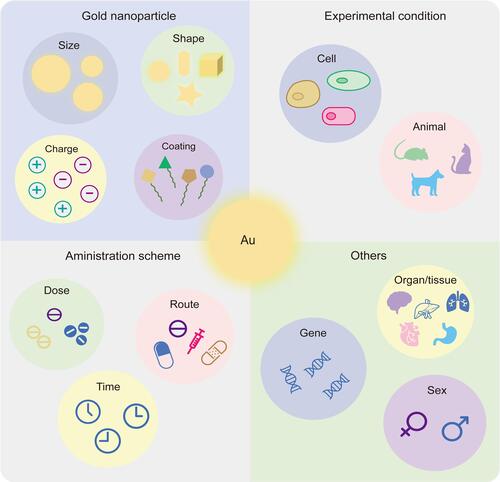Figures & data
Figure 1 Different sizes and shapes of AuNPs. The sizes and shapes of AuNPs can be controlled through simple synthetic methods.
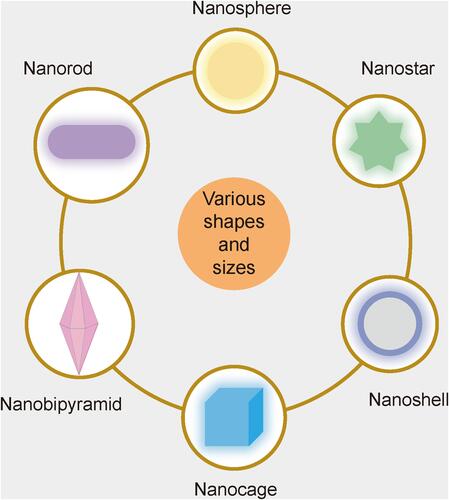
Figure 2 Diverse connecting molecules of AuNPs. AuNPs can directly or indirectly connect various molecules including drugs, nucleic acids (DNA or RNA), proteins or peptides, antibodies, targeting ligands, and other molecules for ideal biological activities and diverse medical applications.
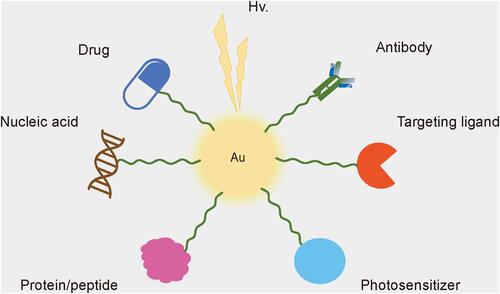
Table 1 Examples of Gold Nanoparticles for Various Anticancer Drug Delivery
Figure 3 Intracellular distribution of free DOX and Au-SS-DOX in HepG2-R cells. Confocal images of cells treated with (A) free DOX and (B) Au-SS-DOX showing distribution of DOX-derived fluorescence (red). (C) Intracellular DOX fluorescence intensity in HepG2-R cells after exposure to free DOX and Au-SS-DOX for 24 hours. Reprinted from Nanomedicine, 8(2), Gu YJ, Cheng J, Man CW, Wong WT, Cheng SH. Gold-doxorubicin nanoconjugates for overcoming multidrug resistance. 204–211, copyright 2012, with permission from Elsevier.Citation34

Figure 4 Schematic diagram for AuNPs synthesis and 5-FU loading using CTAB, and growth curves of A431 tumors in C57BL/6 mice. Reprinted with permission from Safwat MA, Soliman GM, Sayed D, Attia MA. Fluorouracil-Loaded Gold Nanoparticles for the Treatment of Skin Cancer: development, in Vitro Characterization, and in Vivo Evaluation in a Mouse Skin Cancer Xenograft Model. Mol Pharm. 2018;15(6):2194–220.Citation35
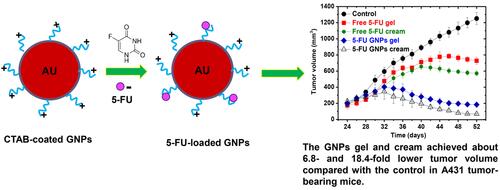
Figure 5 NIR light-induced DNA release. CW irradiation results in dehybridization between dsDNA and release of nonthiolated ssDNA, while pulsed irradiation results in Au−S bond cleavage and release of entire DNA. Reprinted with permission from Goodman AM, Hogan NJ, Gottheim S, Li C, Clare SE, Halas NJ. Understanding Resonant Light-Triggered DNA Release from Plasmonic Nanoparticles. ACS Nano. 2017;11(1):171–179.Citation63
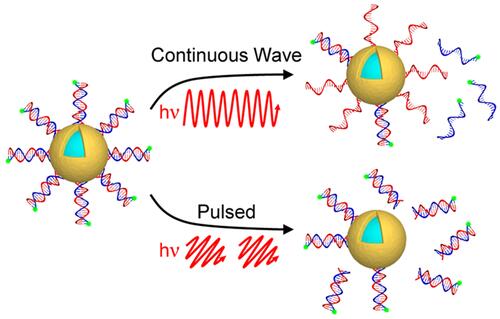
Figure 6 Comparison of cell viability after DTX release from a DNA host without (blue) and with (Orange) CW and pulsed lasers in (A) MDA-MB-231 and (B) RAW 264.7 cells. *P<0.05, **P<0.01, and ***P<0.001. Reprinted with permission from Goodman AM, Neumann O, Norregaard K, et al. Near-infrared remotely triggered drug-release strategies for cancer treatment. Proc Natl Acad Sci U S A. 2017;114(47):12419–12424. Creative Commons license and disclaimer available from: http://creativecommons.org/licenses/by/4.0/legalcode.Citation64
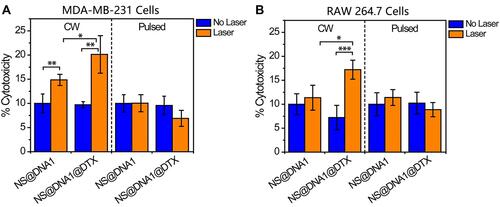
Figure 7 Tfpep-Au NPs-Pc 4 accumulate in orthotopic brain tumors in vivo. (A) Representative in vivo fluorescence hotmap images of a mouse implanted with an orthotopic glioma injected with Tfpep-Au NPs-Pc 4 over time. Bar graph quantifies uptake of Tfpep-Au NPs-Pc 4 versus Au NPs-Pc 4. (B) Mice were analyzed for free Pc 4 fluorescence (RFU) 6 hours post injection. (C) Brains of glioma mice were excised and examined for ex vivo fluorescence (hotmap) after 6 hours. (D) Fluorescence imaging 24 hours post injection of ex vivo organs from mice injected with Au NPs-Pc 4 or Tfpep-Au NPs-Pc 4. Reprinted with permission from Royal Society of Chemistry. Dixit S, Novak T, Miller K, Zhu Y, Kenney ME, Broome AM. Transferrin receptor-targeted theranostic gold nanoparticles for photosensitizer delivery in brain tumors. Nanoscale. 2015;7(5):1782–1790.Citation74
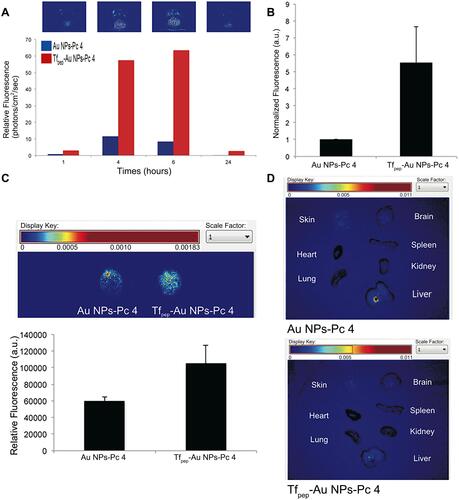
Figure 8 CCK-8 assay of different formulations. (A & B) Cytotoxicity and IC50 of free DOX, AAHD-NPs. (C) The cell viability of SW480 or L929 cell treated with different NPs. (D) Cytotoxicity of chemotherapy and PTT effect by a 808 nm laser irradiation (1 W/cm2 or 2 W/cm2) for 10 min. *P < 0.05. **P < 0.01. Reprinted from Biomed Pharmacother, 130, Zhang Y, Zhou L, Tan J, Liu J, Shan X, Ma Y. Laser-triggered collaborative chemophotothermal effect of gold nanoparticles for targeted colon cancer therapy. 2020;10492. Creative Commons license and disclaimer available from: http://creativecommons.org/licenses/by/4.0/legalcode.Citation102
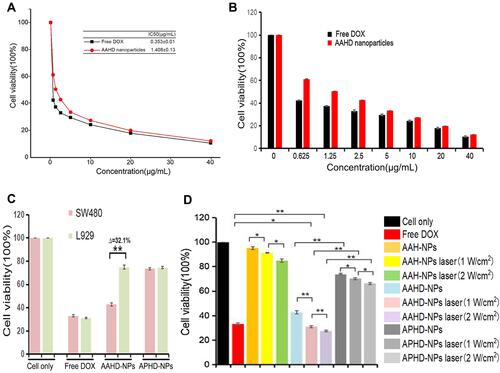
Figure 9 Photothermal and photodynamic effects of Au25(Capt)18. (A) Thermal images of Au25(Capt)18 aqueous solution at different Au concentrations under laser irradiation (808 nm, 2 W/cm2, 5 min); also, DI water under the same condition was set as the control. (B) Temperature curves in (A). (C) Temperature changes in (A). (D) Photostability evaluation by measuring the temperature curves of Au25(Capt)18 aqueous solutions after 4 heating–cooling cycles under repeated laser irradiation (2 W/cm2, 5 min for each). (E) Generation of 1O2 by Au25(Capt)18 via recording the fluorescence emission spectra at 530 nm under laser irradiation at different time points (1 W/cm2, 1–70 min). (F) Fluorescence intensities with irradiation time increasing in (E); (G) Generation of 1O2 by Au25(Capt)18 via recording the fluorescence intensities at 530 nm under laser irradiation with different power densities for 5 min. Reprinted with permission from Royal Society of Chemistry, Liu P, Yang W, Shi L, et al. Concurrent photothermal therapy and photodynamic therapy for cutaneous squamous cell carcinoma by gold nanoclusters under a single NIR laser irradiation. J Materials Chem B. 2019;7(44):6924–6933.Citation118
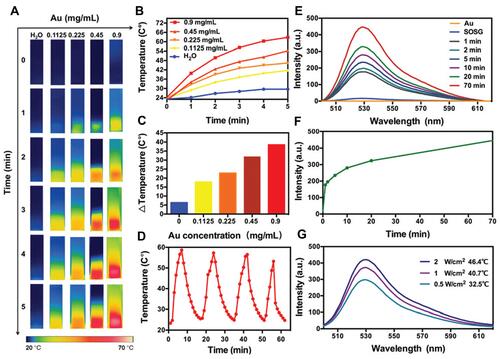
Figure 10 Coronal CT images of nude mice after intravenous injection of AuNPs and FA-Cys-AuNPs at 3 hours (A) and 6 hours (B) (blue arrows indicate the tumor site and red arrows indicate other sites). The injection of the AuNPs (either non-targeted or targeted) leads to an enhanced CT contrast of the tumor area, and 3 h post injection shows a maximum CT enhancement of the tumor area. Reprinted from Int J Biochem Cell Biol, 114, Khademi S, Sarkar S, Shakeri-Zadeh A, et al. Targeted gold nanoparticles enable molecular CT imaging of head and neck cancer: an in vivo study. 105554, Copyright 2019, with permission from Elsevier.Citation138
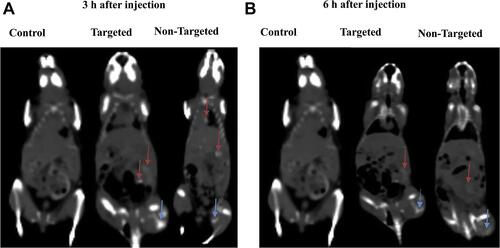
Table 2 List of Clinical Trials of Gold Nanoparticles for Disease Treatment and DiagnosisCitation154
Figure 11 Factors influencing the toxicity of AuNPs. Most factors are able to influence toxicity of AuNPs, including fundamental features of the particles (eg, particle size, shape, surface charge, and coating), experimental conditions (eg, cell and animal model tested, assessed duration), administration scheme (eg, administration route, dose, time and times) and so forth.
